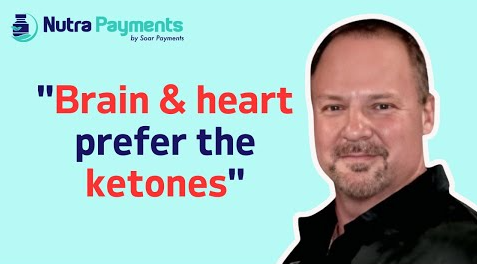If you’re considering the Keto diet, there are important facts you need to know. So we’ve put together this helpful guide to answer all the questions you may have. We’ll look at all the types of food you can and should eat, foods you should avoid, and some methods to get into a state of nutritional ketosis (and stay there!).
Of course there’s also fun tips and tricks you we encourage you to use to keep your Keto Lifestyle fun and stress free!
WHAT TYPES OF FOOD CAN I EAT?
While on a Keto diet you need to focus on eating real food and always look for the full fat options. The full fat options are the key to the Keto diet as high fat levels provide you with a steady supply of energy without spikes or crashes. Below are examples of the fats and fatty acids you will want to eat with each meal.
- Saturated Fats: Yes! Saturated fats are good for you! The government has given saturated fats a bad rap, even though unbiased studies have been conducted that have shown no significant evidence that saturated fats increase your risk of heart disease. Saturated fats are actually great for cooking because they have a high smoke point. These are the types of fats that most of your daily intake should come from on the Keto diet.Some examples of saturated fats you’ll want to include in your diet are as followed:Red Meats, Butter, Ghee, Lard, Cream, Eggs, Coconut Oil, Palm Oil
- Monounsaturated Fatty Acids: These fats are more well-know to be healthy for your body. They have been connected to lower blood pressure, an increase in HDL (Good cholesterol), and reducing belly fat. Oils with high MUFA (monounsaturated fatty acids – aka plant based fats) are best used cold when you are finishing meals.Some example of foods that have monounsaturated fatty acids that you’ll want to include in your diet are as followed:Avocados, Olives, Beef, Extra Virgin Olive Oil, Bacon Fat, and Nuts
- Omega 3 and Omega 6 Fatty Acids: We tend to be deficient in our Omega 3 fatty acids while we eat too much Omega 6 fatty acid. The more balanced your fatty acids are the better your health will become. A lot of people find balancing these two Omegas from diet alone can be challenging, there are supplements for these Omegas fatty acids through diet or you may also take supplements.Some examples of what Omega 3 is found in:Fish, Chia Seeds, Dark Leafy Greens, and WalnutsSome examples of what Omega 6 is found in:Poultry, Eggs, Nuts, and Flaxseed Oil
WHAT ARE “FAT BOMBS”?
In a world where so many of us are so busy and constantly on the go, it’s not always easy to get the proper fats and fatty acids you need throughout the day. There are convenient solutions that can help with this. With a little bit of prep work, you can make yourself delicious Fat Bombs. These fun treats are actually low-carb and high-fat, which is exactly the type of treat you will be looking for. They’re perfect for on the go when you’re having some troubles meeting your goals.
WHAT DO I WANT TO AVOID?
With all the high saturated fats and fatty acids you want to eat on the Keto diet, there are still things you want to avoid. These foods that are listed below are not a part of the Keto diet and will not help you on your quest to be in a state of ketosis:
Processed Vegetable Oil, Margarine, Hydrogenated Oils, Trans fats, Sunflower, Safflower, Canola, Grapeseed, and corn oil
HOW DO I KNOW HOW MUCH PROTEIN I NEED?
The protein intake that you should have is based on two different variants – weight and activity level. Use your weight to determine the minimum and maximum protein intake you ought to have. Bare in mind these numbers will be a good estimate, but you also have to judge the numbers based on your activity level. Your activity level will greatly affect the amount of energy your body uses. Below we have given you the formula needed to determine your minimum and maximum protein intake.
If you weigh yourself in pounds:
Minimum intake will be found by multiplying your weight by 0.6 (lbs x .06 = Min grams of protein).
For Maximum you will multiply your weight again by 1.0 (lbs x 1.0 = Max grams of protein).
If you weight yourself in kilograms:
Minimum intake will be found by multiplying your weight by 1.3 (kgs x 1.3 = Min grams of protein).
For Maximum you will multiply your weight by 2.2 (kgs x 2.2 = Max grams of protein).
Remember that these ranges are only a guide to find your ketogenic state. But nonetheless, always make sure you’re at least have the minimum number of protein intake so you do not lose muscle mass.
HOW DO I MAINTAIN A KETO LIFESTYLE?
Once you’ve reached a Keto state you will want to stay there and live the Ketogenic Lifestyle. Below are a two important and helpful tips in order to keep the keto diet easy to maintain.
- Meal Planning-This is an easy way to keep an eye on your carb intake. A few hours a week to make and plan your meals will relieve any stress of counting your carbs, fats, or protein. We all live a busy enough life as it is, meal planning and prepping just makes sense.Remember to keep everything fresh by adding in a new recipe every week to your plan.
- Give Yourself a Cheat DayDon’t feel guilty! Giving yourself a day to just a relax is a great way to keep yourself motivated. Eating similar meals everyday can break down the even most motivated person out there. The secret of cheat days is to plan them. If you know you have a special event coming up make that your cheat day for the week. Planning out your days will keep you on track while letting you enjoy your time.
HOW DO I FIND MY NET CARB INTAKE PER-DAY?
When your body reaches ketosis you are now using your fat stores as your energy sources instead of glucose. To stay in ketosis most people need to intake 20-100 grams of net carbs per day. Remember net carbs are the total dietary carbohydrates minus total fiber. Below there are two methods you can use to find your ideal net carbs intake:
- Low To High MethodStart at a low level of net carbs to make sure that you enter ketosis quickly. When you detect ketosis (fruity smelling breath, or urine test strips), slowly add net carbs back into your diet. You want to add about 5 grams per week until you detect a very low-level or no ketones. Once you detect a low-level of ketones, you will know how many net carbs will be too many.
- High To Low MethodThis method is easier than the low to high listed above, but you must also take into account that this method takes longer. If you are willing to wait a little longer before hitting a ketosis state, then this is the method for you!
With this method you want to start at a high level of net carbs, but still less than 50 grams. Keep reducing your intake by 5 grams per week until you detect ketosis. This method may be easier but is not recommended because it takes much longer, and the longer it takes, the longer you will not be in a ketosis state.
DON’T FORGET TO WATCH YOUR CARB INTAKE!
Yes, we know, it can be a really daunting task. Everything seems to have carbs in it, hidden in many products. Our best advice for store-bought food is to read all the labels!
Our best tips are to start meal planning and prepping, and try to limit your carbs as much as possible through foods that are naturally low in carbs. Limit your carbohydrates to vegetables, nuts, and dairy while avoiding wheat, starch, and fruit.


 ACCOUNT
ACCOUNT
 CART
CART





